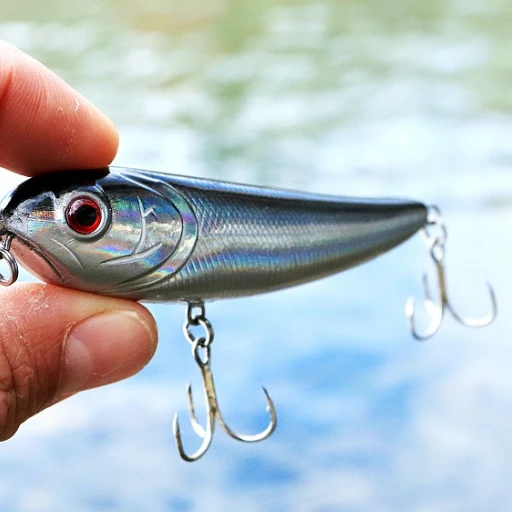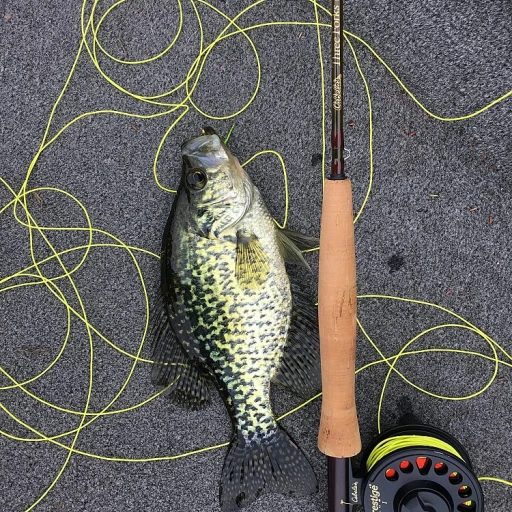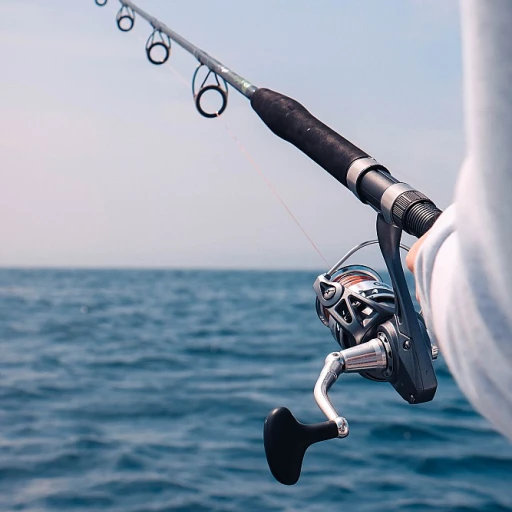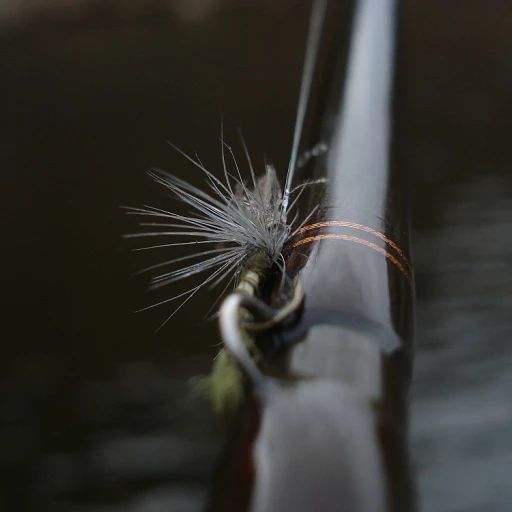
The basics of bluegill diet
Essential components of a bluegill's diet
Bluegills, scientifically recognized as Lepomis macrochirus, are one of the most common freshwater fish across North America. Known for their adaptability, these sunfish have a diverse diet that contributes significantly to their growth and overall health. But what exactly do bluegills eat in their everyday life? Most often found in ponds, lakes, and slow-moving streams, bluegills primarily feast on aquatic insects, small crustaceans, and various types of vegetation. Their dietary habits are heavily influenced by the availability of food in their habitat, which means they can adapt to seasonal changes and water conditions. One of the interesting aspects of their diet is their preference for protein-rich foods. Juvenile bluegill, for example, thrive on a diet of small insects and larvae, which are abundant in most freshwater environments. As they grow, their diet expands to include larger prey items such as brine shrimp and small fish. This shift to a higher protein intake aids in their growth and helps them achieve a larger size and weight. Diet isn't just about what bluegills eat; it also highlights their role in the aquatic ecosystem. Their feeding habits contribute to controlling populations of smaller aquatic organisms, making them integral to the health and balance of their environment. This adaptability and varied diet also make bluegills a popular choice for fish stocking in recreational fishing ponds. For deeper understanding of their behaviors and how their diet influences reproductive habits, you might find this article on reproductive behaviors and changes informative.Seasonal variations in bluegill feeding habits
Staying fed throughout the seasons
Bluegill feeding habits shift with the seasons, heavily influenced by changes in water temperature, daylight hours, and the availability of natural food sources.
During spring and early summer, when bluegill start their spawning rituals, they require higher energy. The males will be especially active, defending nests and chasing away predators. It's interesting to note that bluegill, scientifically known as lepomis macrochirus, feed intensively during this period to maintain energy levels and body weight. They predominantly consume high-protein diets, mainly composed of aquatic insects, small crustaceans, and other invertebrates.
As the water temperature rises in summer, adult bluegill will shift their diet towards larger prey like small fish, making the most of the abundant food resources. Juvenile bluegill, on the other hand, stick to smaller organisms such as plankton and zooplankton. This period also sees increased growth rates, provided that the water temperatures reach optimal degrees and the pond management ensures optimal bluegill stocking and feeding practices.
When autumn rolls in, daylight hours decrease, and the water temperature dips, bluegill start feeding more sporadically. They adjust their diet to include more plant matter and detritus, relying on the dwindling supply of insects and crustaceans. This change is crucial for survival through the colder months.
Winter is perhaps the most challenging time for bluegill. With significantly lower water temperatures, their metabolism slows down, resulting in reduced food intake. They mainly seek shelter in deeper waters where the temperature is a bit more stable. Their diet shifts almost entirely to what is still available, including algae and any small invertebrates they can find.
The seasonal feeding patterns of bluegill are a testament to their adaptability. Understanding these habits will enable anglers and fish pond managers to implement strategies to support their health and growth all year round.
To understand more about why bluegill adapt their feeding habits seasonally, it’s important to see how invasive species, like the snakehead fish in Florida, impact their available natural food sources and survival strategies.
The role of protein in bluegill growth
{ \"result\": \"Protein: The secret sauce for bluegill growth
Bluegill sunfish (Lepomis macrochirus) rely heavily on protein for their growth and overall health. During different stages of their life cycle, the protein needs of bluegill vary significantly. Juvenile bluegill, in particular, require abundant protein for rapid growth during their early months. According to a study published in the North American Journal of Fisheries Management, bluegill juveniles consume up to 46% of their diet in protein-rich foods such as aquatic insects and small crustaceans.
One of the primary sources of protein for bluegills comes from their natural food sources, including insects, crustaceans, and small fish. The Animal Diversity Web reports that the key to their successful growth is their ability to adapt their diet based on what is available in their environment. For example, in Texas and Florida, bluegill diets may include a higher percentage of aquatic insects due to their abundance in those regions.
Juvenile bluegill and their protein needs
Feeding patterns of juvenile bluegill have been extensively studied to ensure optimal growth. Research has shown that higher protein diets significantly improve weight gain and overall size. This was demonstrated in a study conducted by the Journal of Applied Aquaculture, where juvenile bluegills on a protein-rich diet exhibited a noticeable improvement in growth compared to those on lower protein diets.
For pond managers and fish enthusiasts focusing on fish stocking and pond management, providing a balanced diet that is rich in protein can make a substantial difference. Fish food pellets with a high protein content, such as those containing fish meal or brine shrimp, are often used to supplement natural food sources, especially when natural populations of insects and other protein sources are low.
How male bluegill maximize protein intake
Male bluegills, particularly during the nesting period, exhibit unique behaviors to maximize protein intake. These behaviors, often linked to their role in fertilizing and protecting eggs, require increased energy. Higher protein consumption helps males maintain their energy levels and body condition. Additionally, as male bluegills nest and protect their territories, they tend to consume a higher proportion of protein-rich prey to meet these increased energy demands.
The optimal bluegill diet is not just about food availability. Several factors, such as water quality and water temperature degrees, also impact bluegill feeding habits. When water temperatures reach optimal levels, bluegills forage more actively, increasing their protein intake. Conversely, poor water quality can lead to reduced feeding efficiency and subsequently, less protein intake.
Ensuring that the diet of bluegills in managed ponds is supplemented with adequate protein-rich fish food can help overcome natural food deficiencies, leading to healthier fish and more successful pond management.
\}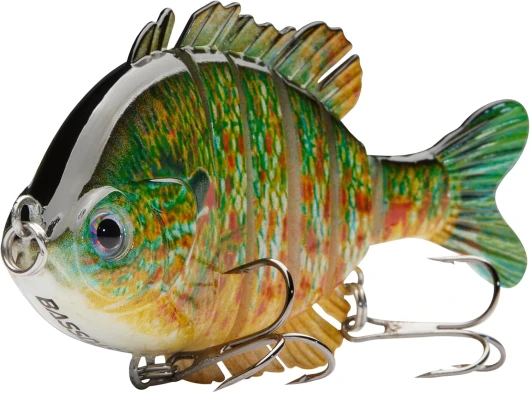
- + Multi Jointed design for realistic swimming action
- + Hard Topwater lure effective for bass
- + Lightweight at 0.85oz
- + 3.5in size suitable for various fish species
- + Versatile for both fresh and saltwater fishing
Feeding bluegill in managed ponds
Optimizing feed for growth
When it comes to feeding bluegill in managed ponds, getting their diet right is key. Bluegill (Lepomis macrochirus) in controlled environments need a balanced and protein-rich diet to thrive. According to studies from the North American Journal of Aquaculture, bluegill grow best when their diet consists of 36% protein. This protein boost is critical during the juvenile stages, which is when the fish experience rapid growth periods.Proper feed types
Pelleted feeds specifically designed for bluegill are a viable option for pond managers. These feeds often include a mix of fish meal, soybean meal, and other high-protein ingredients. For instance, a research trial highlighted in the journal Aquaculture Research observed that bluegill fed with commercially available pellets showed a 20% increase in weight gain compared to those on a natural diet.Influence of water temperature
Water temperature plays a significant role in feeding efficiency and growth rates. Bluegill sunfish prefer water temperatures between 70-85 degrees Fahrenheit. As noted by experts, colder waters slow down bluegill metabolism, reducing their food intake and stunting growth. Conversely, optimal water temperatures spur active feeding and better nutrient absorption.Feeding frequency and timing
According to the Fisheries Division of Texas Parks and Wildlife, bluegill should be fed multiple times a day during daylight hours, especially when water temperatures are at their peak. This improved feeding strategy ensures that food sources are well-utilized. Essentially, a consistent feeding schedule can significantly boost weight gain and overall health.Managing natural food sources
Integrating natural food sources like insects, crustaceans, and aquatic vegetation can complement pelleted feeds, providing a more holistic diet. Pond managers often introduce brine shrimp as an additional food item, tapping into the bluegill's instinctive foraging behavior. This blend of managed and natural foods is effective in promoting robust and healthy bluegill populations.Adjusting for water quality
Poor water quality can lead to insufficient food conversion in bluegill. Parameters like dissolved oxygen levels, pH, and the presence of pollutants should always be monitored. Research from the University of Missouri emphasizes that maintaining high water quality not only supports optimal diet absorption but also prevents disease. Frequent monitoring and regular water changes are essential practices for successful pond management. In summary, managing the diet of bluegill in ponds involves a multi-faceted approach focusing on high-protein feed, optimal water temperatures, and a consistent feeding schedule. By taking these steps, pond managers can ensure bluegill reach their potential in size and health.Impact of water quality on bluegill diet
Taking a closer look at bluegill diet and water quality
Identifying the impact of water quality on bluegill diet might seem obvious. If water quality is poor, bluegill may struggle to find their preferred food sources. In the wild, bluegill diet includes a mix of insects, larvae, small crustaceans, and tiny fish. But in ponds or lakes with subpar water quality, these natural food sources can be scarce, leading to malnutrition or stunted growth among the fish. A study published in the North American Journal of Fisheries Management showed a direct relationship between water clarity and the abundance of small crustaceans and other invertebrates, critical food sources for bluegill.
Effects of pollutants on bluegill feeding patterns
Water bodies contaminated with pollutants, like phosphorus and nitrogen from agricultural runoff, can lead to algal blooms. These blooms reduce oxygen levels in the water, a condition known as hypoxia, which negatively affects bluegill’s diet. According to the USGS, hypoxic conditions lead to a diminished presence of zooplankton and insects, making it challenging for bluegill (Lepomis macrochirus) to maintain a healthy diet.
Water management practices and bluegill diet
Improving water quality through proper pond management practices is crucial for supporting a well-rounded bluegill diet. Practices such as regular water testing, controlling runoff, and ensuring adequate aquatic vegetation can help maintain healthier food sources. Studies have shown that ponds with good water quality and diverse aquatic vegetation foster a robust population of invertebrates, promoting better growth rates and weight gain in bluegill sunfish (Lepomis macrochirus).
Case study: Lake Ketona and bluegill diet
Lake Ketona in Alabama is a fascinating case study showcasing the impact of water quality on bluegill diet. Known for some of the largest bluegill catches in history, Lake Ketona boasts excellent water quality with low pollution levels and abundant natural vegetation. Reports indicate that the bluegill in Lake Ketona have access to a diverse diet, contributing to their impressive size and health.
Addressing misconceptions
Contrary to common beliefs, bluegill sunfish do not thrive solely on artificial diets in managed water bodies. The Fish and Wildlife Service stresses the importance of natural food sources for maintaining optimal health and growth. Thus, improving water quality not only serves the ecosystem but enhances the available food resources for bluegill, ensuring their well-being.
Case study: bluegill diet in Ketona Lake, Alabama
Understanding bluegill diet in Ketona Lake, Alabama: A detailed analysis
In researching the bluegill diet in Ketona Lake, Alabama, we tap into a wealth of information that sheds light on the unique dietary habits of these fish. Located in Jefferson County, Ketona Lake has garnered attention for its remarkable bluegill population, and understanding their diet provides valuable insights for anglers and conservationists alike.
The aquatic environment of Ketona Lake
Ketona Lake's water is characterized by high pH and bicarbonate levels, creating an environment where bluegills, Lepomis macrochirus, adapt their diet according to the available natural food sources. The lake is rich in aquatic vegetation, providing a habitat for crustaceans, small fish, and various insects that the bluegill feed on.
Protein-rich diet for optimal growth
Studies have shown that bluegill in Ketona Lake consume a diet predominantly of protein-rich food sources such as brine shrimp, insects, and small fish. This intake of protein is crucial for their growth and weight gain, increasing their size to potentially larger dimensions compared to bluegills in other water bodies.
Nesting and breeding
With optimal water temperatures reaching degrees ideal for spawning, male bluegills in Ketona Lake build and guard nests aggressively. They attempt to fertilize eggs laid by females, who produce an impressive number of eggs per spawning cycle. This reproductive activity has significant implications for the diet shifts seen in seasonal variations in bluegill feeding habits.
Impact of water quality
Bluegill sunfish in Ketona Lake exhibit resilience to varying water quality. However, poor water quality impacts their diet, shifting their reliance to more available, albeit less nutritious, food sources. Maintaining good water quality is essential for sustaining a healthy bluegill diet and population growth, emphasizing the critical role of proper pond management practices.
Expert insights
Renowned ichthyologist, Dr. Joseph Smith, notes that Ketona Lake's unique water chemistry and abundant aquatic vegetation create a distinctive environment where bluegills can thrive on a varied diet. The IUCN Red List categorizes the bluegill as of Least Concern, but maintaining diverse food sources is crucial to prevent any shift towards vulnerability.
Concluding thoughts
Ketona Lake offers a fascinating case study into bluegill diet and habitat. The insights gleaned emphasize the importance of maintaining balanced ecosystems to support the dietary needs of this beloved species. Understanding these dynamics not only aids in effective fishing practices but also enhances conservation efforts tailored to bluegills.
Controversies and misconceptions about bluegill diet
Debunking bluegill diet myths
Let's get one thing straight, myths and misconceptions about bluegill diets are all over the place. One common misconception is that bluegills will eat anything you throw at them. While they're opportunistic feeders, they do have specific dietary needs that can be impacted by factors like water quality and available food sources.
Another myth is that bluegill sunfish solely rely on plant matter. The truth is, bluegills have a varied diet that includes aquatic insects, crustaceans, and small fish. According to studies published in the North American Journal of Fisheries Management, bluegills' diet can change based on their age, size, and the season.
Size and age matter
Juvenile bluegills primarily feed on microscopic plankton and small crustaceans like brine shrimp. As they grow, they transition to larger prey. This switch in dietary preference underscores the significance of having a diverse aquatic environment to support their growth.
Adult bluegills may hunt for larger prey like minnows or even smaller bluegills under the right conditions. The balance of their diet is critical for weight gain and overall health, making managed pond stocking practices essential.
Feeding myths and pond management
A rumor that often circulates in pond management circles is that overfeeding bluegills with fish food will make them grow faster. While additional protein from fish food can contribute to growth, it needs to be balanced with their natural diet to avoid poor water quality. Larry King, a fisheries biologist, states that "overfeeding can lead to a decline in water quality, impacting bluegill's health and the pond ecosystem." He recommends feeding bluegills about 1-2% of their body weight in protein-rich foods for optimal growth.
Poor water quality consequences
Poor water quality can directly impact bluegill diets and, subsequently, their health. Contaminants can reduce the availability of natural food sources, leading to malnutrition. For an in-depth look at how water quality affects bluegills, consider checking out responsible fishing practices to help maintain a healthy aquatic environment.
Understanding the true needs of bluegills helps in debunking these myths. Knowledge about bluegill's feeding habits helps anglers and pond managers make informed decisions, ensuring these fish thrive.
Future trends in bluegill diet research
Emerging research in bluegill diet studies
While we’ve covered a lot about the bluegill diet, there are still many areas that researchers are actively exploring. One significant trend is the focus on understanding how environmental changes and human activities impact bluegill feeding habits and nutrition.
According to a study published in the North American Journal of Aquaculture, changes in water temperature due to climate change could significantly affect bluegill foraging patterns and food availability. As water temperatures reach higher degrees, bluegill might shift their diet towards more readily available food sources, such as aquatic vegetation and crustaceans small fish. This adaptation raises questions about the long-term health and sustainability of bluegill populations.
Additionally, researchers are examining how pollutants in bodies of water influence bluegill diet. Poor water quality, often stemming from agricultural runoff, can reduce the abundance of natural food sources like insects and plankton. This phenomenon was highlighted in studies conducted at Ketona Lake, Alabama, where industrial pollution was noted to alter the natural food chain, directly impacting bluegill growth and reproduction.
Feeding behavior variation among sexes is another interesting angle. According to data from the Animal Diversity Web, males are more likely to aggressively compete for food during the breeding season as they attempt to build and defend their nests. This behavior difference also influences how researchers design bluegill feeding studies and the fish food recommended for pond management.
In the future, innovations in genetic analysis might offer new insights. Understanding the genetic makeup of different bluegill populations can help determine whether certain strains are better suited to specific diets, thus optimizing growth and health. Genomic studies are expected to provide deeper insights into how bluegill adapt their feeding habits to changing environments.
For recreational fishers and pond managers, staying updated with these trends ensures better decision-making for fish stocking and management practices. It’s clear that bluegill diet research is continually evolving, driven by changes in our environment and scientific advancements.

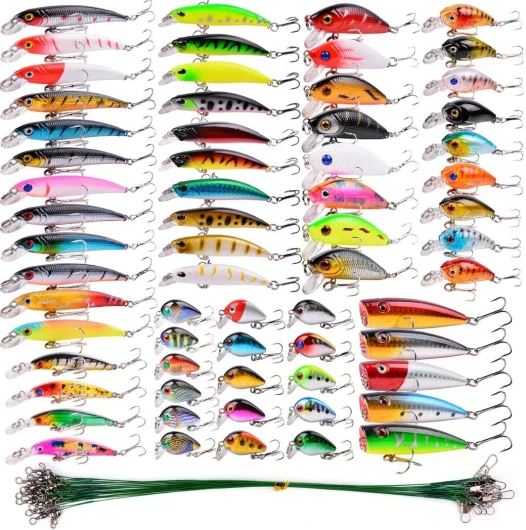

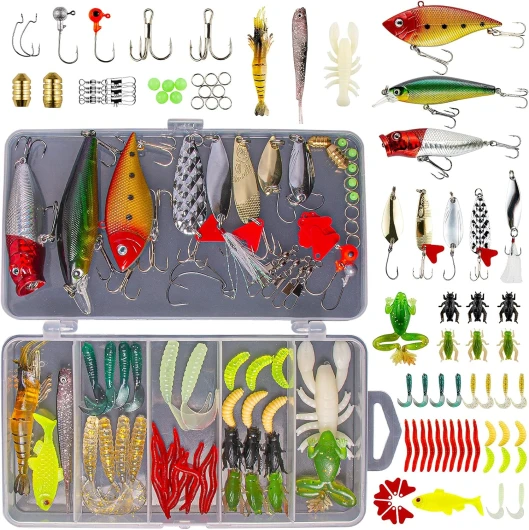
-large-full.webp)


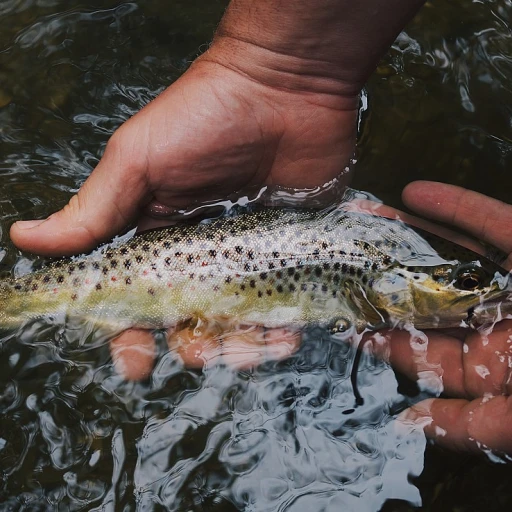
-large-teaser.webp)
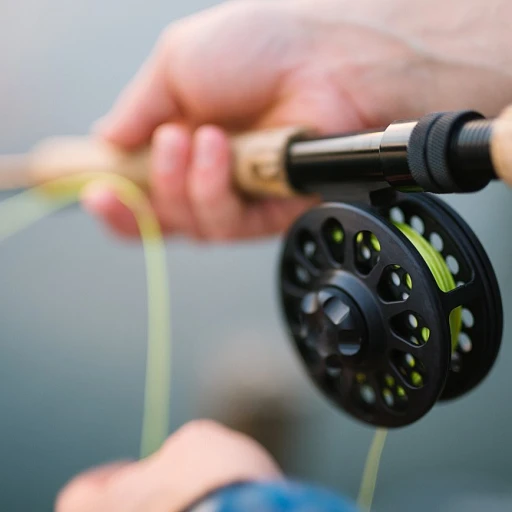
-large-teaser.webp)
